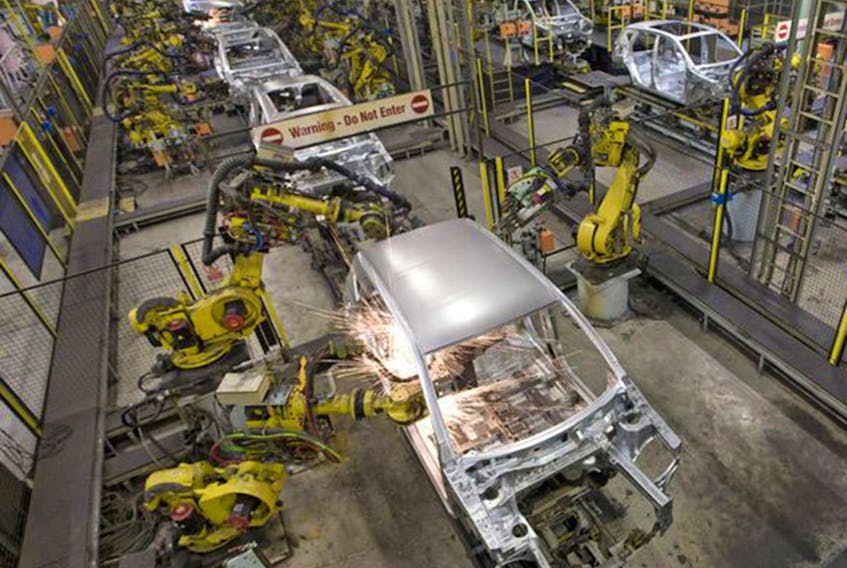As automation encroaches further into our daily lives, the rise of robots threatens to eliminate 20 million manufacturing jobs by 2030 — and they will also soon start to shake up the services sector.
The prediction comes courtesy of a new study published today by Oxford Economics, an independent research firm based in the United Kingdom.
“Innovations in AI, machine learning, and computing power suggest a significant acceleration in the adoption of robots across service industries,” according to the report published Wednesday.
The study modelled seven advanced economies, the U.S., Germany, the U.K., France, Sweden, South Korea, Japan and Australia. While there was no specific data for Canada’s economy, the chosen countries were intended to be broadly applied to similar economies.
“You can do the math and say this model strongly suggests that Toronto will feel less impact and rural manufacturing-centric economies will feel more impact,” Edward Cone, Oxford Economics technology practice lead and one of the editors of the study, told the Financial Post. “(These countries were chosen based) on quality of the data available and these countries as being representative of the global economy.”
Around 1.7 million jobs have already been lost to robots globally since 2000.
Each new robot displaces an average of 1.6 manufacturing workers, which could lead to a global manufacturing workforce that is 8.5 per cent smaller in 2030, compared with current levels.
“Yes, Amazon warehouse workers are likely to be replaced by robots in two or three years,” Kai-fu Lee, a venture capitalist and former senior executive at Google and Microsoft, said in the report. “But for work that takes place in unstructured environments, I don’t anticipate robots actually replacing people for another 20 or 30 years. Some more breakthroughs will be required.”
One thing Cone says the report doesn’t answer is what exactly to do about this paradigm shift in job creation, which does not appear to be constrained to just manufacturing.
The robots are gaining on us; if you’re fleeing from manufacturing to construction or transport those jobs are going to be imperiled by robots as well
“The cliffhanger of this particular movie is the policy implications. One of the takeaways here that is a little scary is that as robots displace workers, those workers move into other fields,” said Cone. “Those fields are next for robots. The robots are gaining on us; if you’re fleeing from manufacturing to construction or transport those jobs are going to be imperiled by robots as well.”
However, robotics could enhance certain segments such as health care, where, unlike other settings, machines would work alongside human beings, not replace them.
The Oxford report’s findings correlate with CitiGroup’s recent report Technology at Work v4.0, which states that an estimated 47 per cent of U.S. jobs were at risk from automation and artificial intelligence.
CitiGroup also found use of robotics to increase efficiency in a number of industries. In banking, virtual financial advisors are 80 per cent more cost effective than humans and can handle 1.5 to 2 million customer queries every day.
In manufacturing, a 1% increase in robots per worker translated into a 0.1% increase in worker productivity, as they were freed for other tasks.
There were positive results as well. In the manufacturing sector, a one per cent increase in robot stock per worker translated into a 0.1 per cent increase in worker productivity, as they were freed for other tasks.
Cone stresses that this displacement is not wholly unique in human history.
“Of course, technology has displaced jobs since the first tool and at the turn of the last century half the workforce was agriculture and now it’s under five per cent,” said Cone. “So, historically, you see the shift to automation and new jobs are created, new industries are created.”
This also means that a 30 per cent increase in robot installations by 2030 would result in an estimated $4.9 trillion in additional global GDP compared with current forecasts – equal to the GDP of Germany.
A robot rise would also further consolidate China’s position as the world’s manufacturing hub. Currently, every third robot resides in China. By 2030, that number could hit 14 million.
Copyright Postmedia Network Inc., 2019









